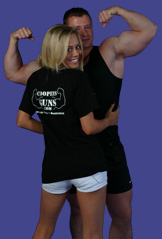Stretching
Stretching takes neural and muscular tissue to the end of its available range.
There are different types of stretching:
- Dynamic - ballistic - repeated use of momentum with large range of movement. Extreme care is needed with this type of stretch and is usually only used by athletes
- Static - are slow and controlled stretches and are the most commonly used. They enhance postural awareness and fine motor control
- PNF - (Proprioceptive Neuromuscular Facilitation) the stretching and contraction of a targeted muscle group
It is important when stretching that you are relaxing the muscles, as contracting the muscles increases the risk of a soft tissue injury, most likely a strain (see soft tissue injury article).
Limiting factors
Factors limiting the ability to stretch include:
- Genetic length of tissues
- Injury
- Stage of healing following injury
- Scar tissue and adhesions preventing movement
- Pain
The static stretch
Of the different types of stretches static stretches are the most commonly used.
A static stretch should be:
- Slow sustained
- Held for 30seconds, this is very important, Bandy et al (1997) has proved that 30secs is the most effective stretch time to improve flexibility. So stop those 10 sec holds!!
- Stretch two joint muscles
- Not be bounced
The evidence for stretching is often conflicting and not enough research is done on healthy tissue samples, however, stretching is commonly used by all, with apparent benefits. So follow the guidelines and stretch safely. If you only take one thing from this article, let it be to hold your stretches for 30 seconds. Give it a try and if you see any improvement please get in touch on the forum and let us know. I sure have! Any questions then just get in touch on the forum and someone will get back to you.
References
- Bandy, W.D, Irion, J.M, Briggler,M. (1997) The effect of time and frequency of static stretching on the flexibility of the hamstring muscle, Physical Therapy.Vol;77:1090-1096
- Shrier, I, Gossal,K.(2000) Myths and truths of stretching, Physician Sports Medicine.Vol;28
If you have any questions please do not hesitate to get in contact on the forums.
